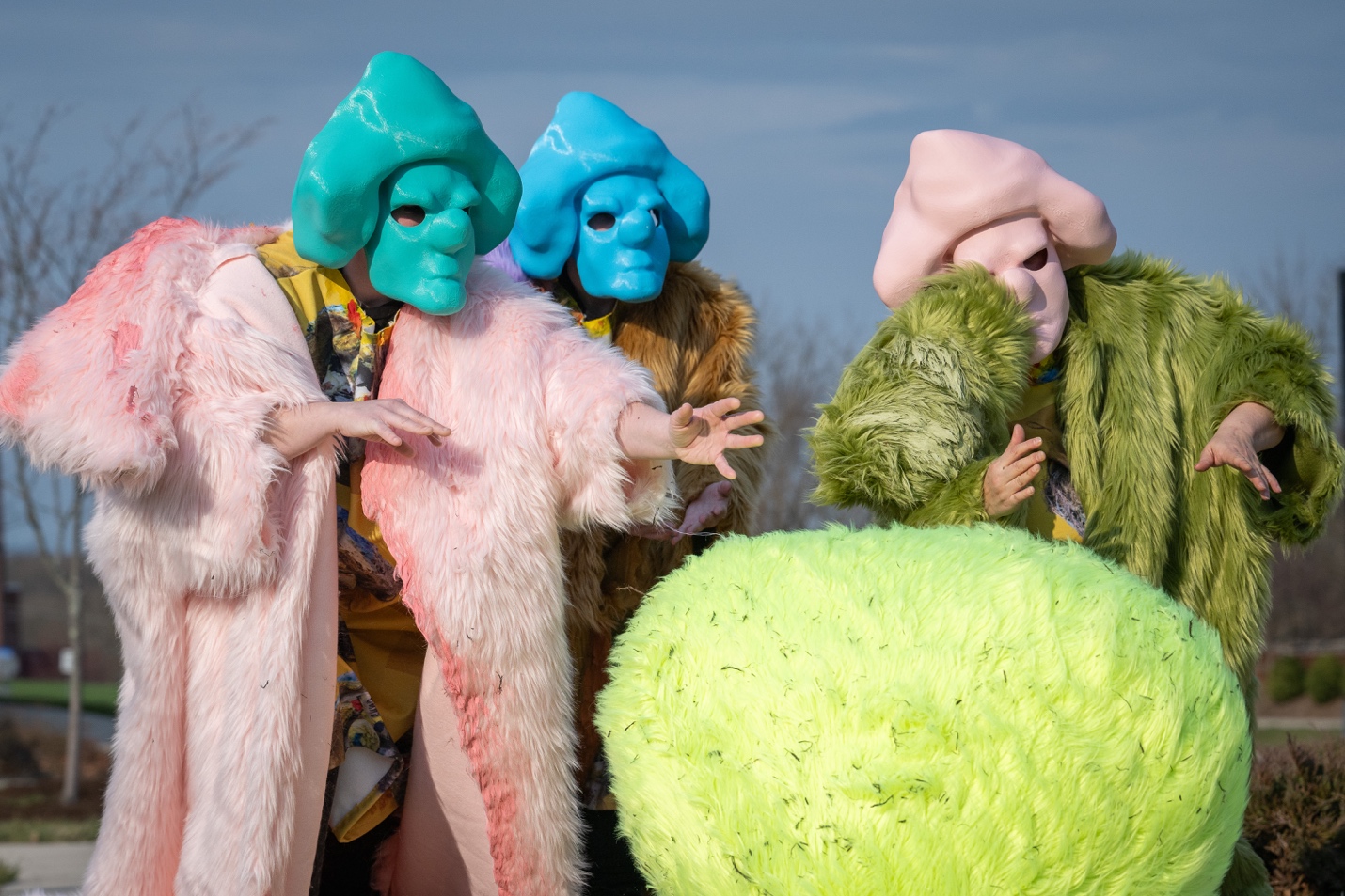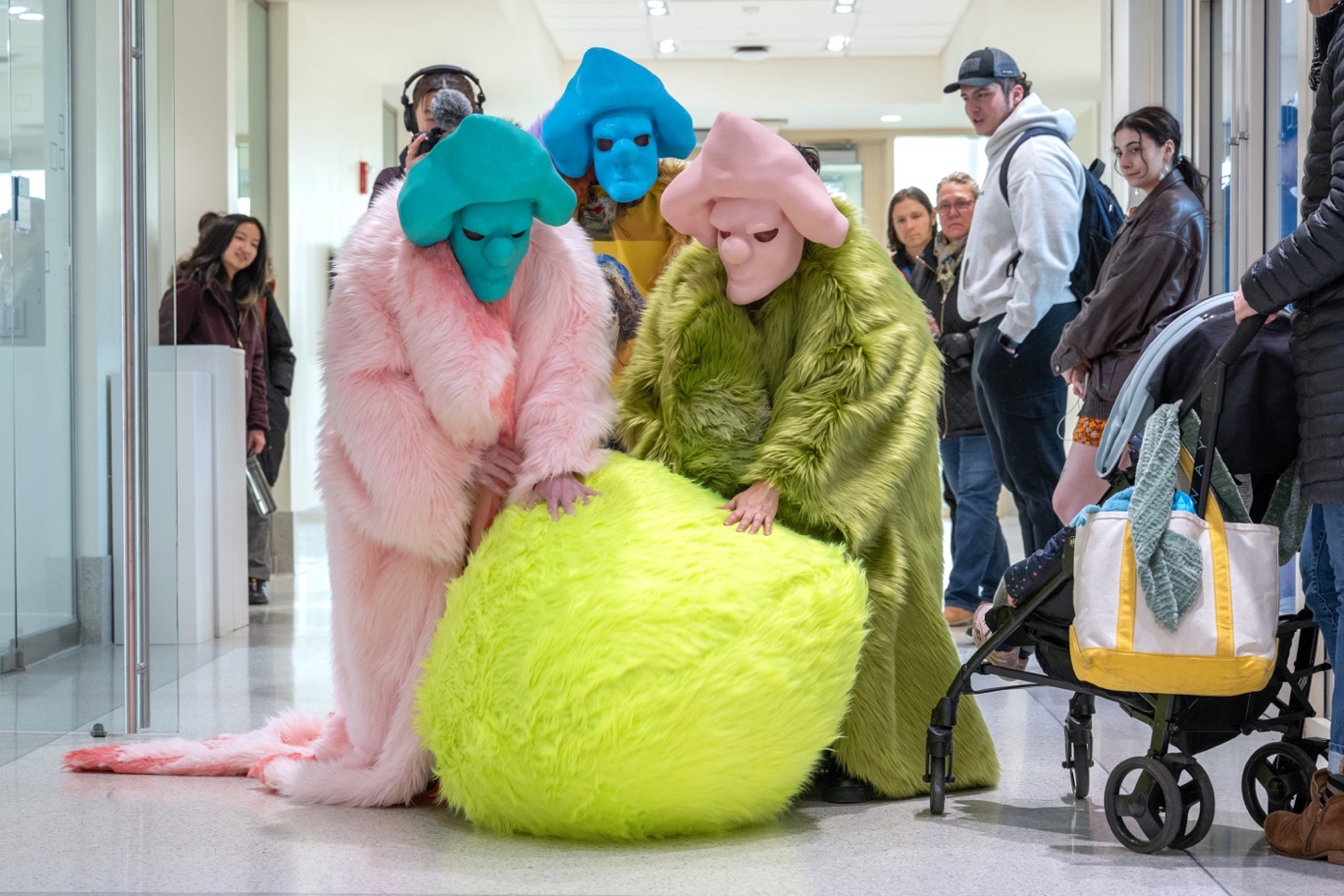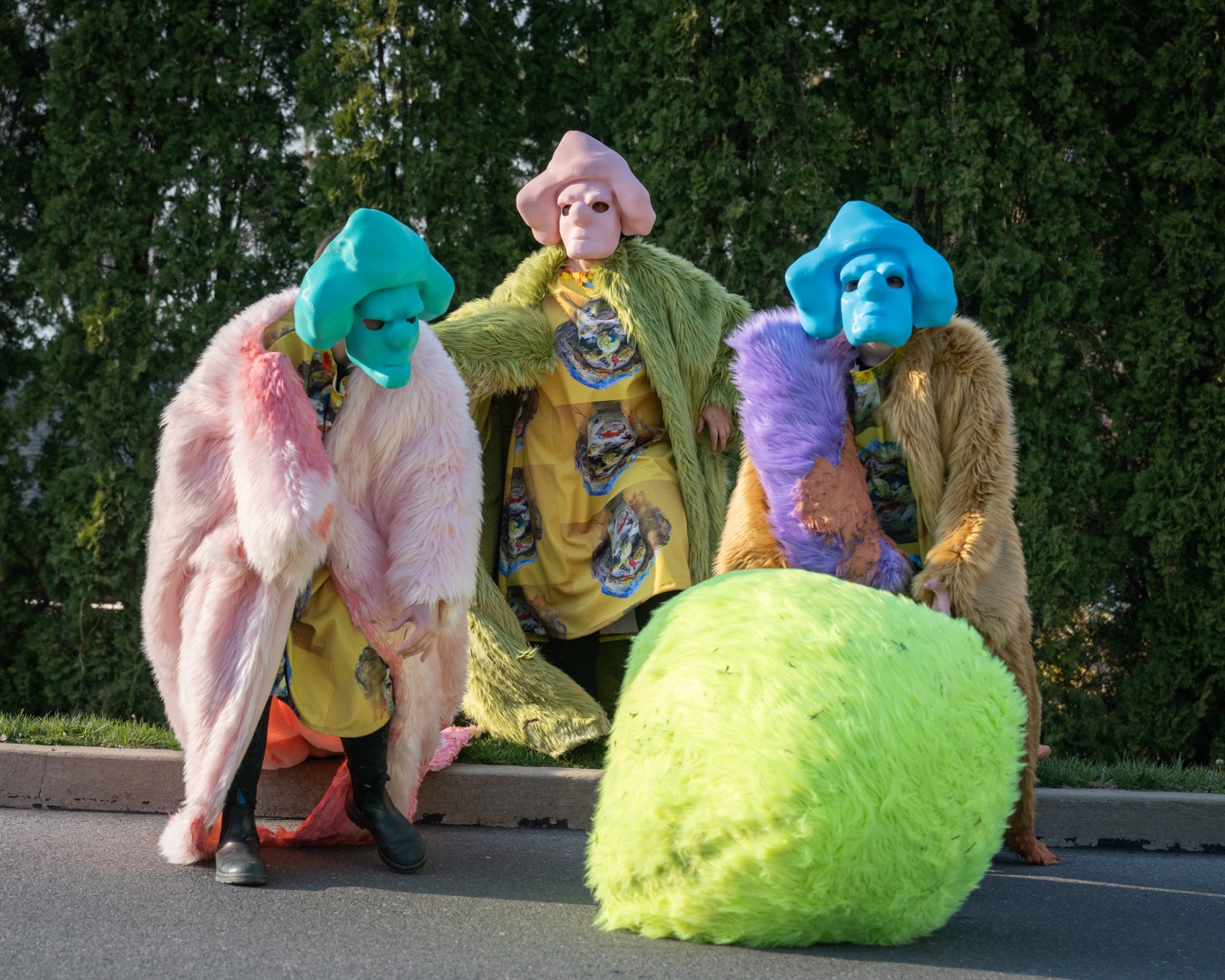‘Bad Woman’ Comes to Bucknell University


There is much flexibility in performance as an art form as evidenced by Katya Grokhovsky and her ongoing multi-media project Bad Woman. During her Spring Ekard Artist Residency at Bucknell University, she invited students, among them Kelsey Werkheiser and Sierra Fancher, Bucknell’s Sculpture Studio Assistant, to develop the costuming and expression of Bad Woman. The performance took place on Bucknell’s campus on March 22nd with Werkheiser and Fancher performing for the first time. To investigate the effects that performance art can have on developing creative and artistic practices across mediums, Cultbytes spoke to the group about their collaborative process.
Bad Woman first emerged in reaction to the rampant misogyny and rhetoric running up to the 2016 election. Some might remember Trump’s tweet from April 2015: “If Hillary Clinton can’t satisfy her husband at makes her think she can satisfy America #MakeAmericaGreatAgain” or when he commented that Fox News Anchor Megyn Kelly had “blood coming out of her wherever.” These are only two of the many insulting sexist remarks from Trump that came to change the tone of American media. Wearing a hand-made papier-mâché mask and her mother’s nightgown and grandmother’s fur coat Bad Woman became Grokhovsky’s way to investigate the politics of defiance and, in her words, “perform generational rage.”
As we are once again in an election year, Grokhovsky decided to resurrect her character in multiple. To create a processional, she enlisted Fancher to multiply her character’s mask using 3-D printing. “After digitally recreating Bad Women with the guidance of Grokhovsky, six iterations later over email, Zoom, and Facetime, we got the project to a point where we were happy with it. From there I took the original Z-Brush design into a couple of different programs to figure out the best way to hollow out the mask. After messing around with it, I landed on using the program Meshmixer. Once finalizing the hollow we got working on production. Each mask took roughly 29 hours each to print,” Fancher commented.

Bucknell student Kelsey Werkheiser, a poet, who performed for the first time in the piece wrote to Cultbytes: “It was strange, but I have always been a fan of strange art and I appreciate art that pushes the confines of what it’s traditionally trapped in. The performance certainly made me anxious, but it was also fun and I reveled in the curious looks of passers-by because things this ‘strange’ don’t tend to happen on our campus.” The work’s feminist themes, including rage, attracted Werkheiser to the project as she engages with them in her practice. “It was put together in such a limited timeframe, but the style of the work allows for a lot of improvised actions and the learned parts are relatively simple,” she continued. Reflecting upon the tribulations of collaborative work, student and otherwise, she remarked: “It was certainly disheartening to learn that other students who had originally committed had decided against it, but I think it just made us closer as a small group.”
With the help of 3-D print technology, Bad Woman’s mask can now be recreated indefinitely. The group remade Bad Woman’s found clothing as a new colorful oversized fake fur performative coat and the nightgown has been reimagined as a dress, sewn from fabric which bares the image of the previous Bad Woman mask, the ancestor. “Employing a combination of a walking procession, movement, sound, text, 3D printing, and costuming, Bad Woman 2024 at Bucknell is a new iteration, which highlights the absurdity of stereotypes and facilitates an open-ended space of expression of inter-generational rage and lifting of psychic energy,” Grokhovsky comments.

The process was a learning experience for everyone involved, Fancher comments: “As I have been working with 3D printers for a couple of years now, particularly with an interest in art objects with a concentration in wearables. To be a part of this project was genuinely a blast; experimenting and learning more about not only the works of Grokhovsky, their creative methodology, teaching pedagogy, and their general motivations. While it was a busy week of making, we spent a bit of time meeting collectively, walking the course, and moving through the motions of what the steps of performance would be. Completely out of my comfort zone and as an over-planner, it was a bit nerve-wracking to not have each step figured out; in the same regard, a little electrifying too. Reflecting on the hours of preparation and the oral Fluxus directives, I could not have anticipated a more captivating outcome within this project’s timeframe.”
Since relocating to the Bucknell campus in Lewisburg Pennsylvania Fancher has felt like an outsider. They found that participating in the collective experience of displacement, not just from their own identity but the broader community surrounding them, was fulfilling. We are certainly stronger together, as Grokhovsky points out: “The rage continues. Most importantly, Bad Woman has now opened her disguise to others, allowing for a community, solidarity, and power to grow strength in numbers together, perhaps eventually becoming an army.”
You Might Also Like
Katya Grokhovsky on FANTASYLAND and a Decade of Making and Migrating
Beatriz Cortez Visualized the Mayan Underworld and Traveled It Up the Hudson River
What's Your Reaction?
Anna Mikaela Ekstrand is editor-in-chief and founder of Cultbytes. She mediates art through writing, curating, and lecturing. Her latest books are Assuming Asymmetries: Conversations on Curating Public Art Projects of the 1980s and 1990s and Curating Beyond the Mainstream. Send your inquiries, tips, and pitches to info@cultbytes.com.

